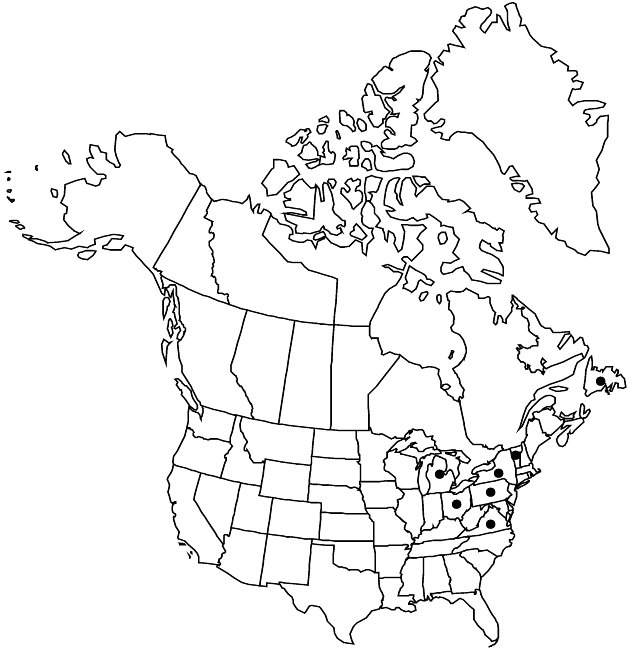Crepis biennis
Sp. Pl. 2: 807. 1753.
Biennials, 20–120 cm (taproots branched). Stems 1, erect, slender to robust, branched proximally or near middles, ± setulose or glabrescent. Leaves basal and cauline; petiolate (at least basal); blades oblanceolate to runcinate, 5–25 × 1.5–7.5 cm, margins pinnately lobed or dentate (terminal lobes triangular), apices ± acute, faces slightly scabrous (hairs yellow, fine). Heads 12–14, in simple or compound, corymbiform arrays. Calyculi of 7–9, lance-linear, glabrous or tomentulose bractlets 3–6 mm. Involucres campanulate, 8–13 × 5–9 mm. Phyllaries 10–17 (pale to dark green or nearly black) linear-lanceolate, 10–11 mm, (margins scarious) apices acute to obtuse (ciliate), abaxial faces ± canescent-tomentose, adaxial often with yellowish or black, appressed hairs. Florets 30–100; corollas yellow, 12–18 mm. Cypselae yellowish or reddish-brown, fusiform, 4–7 mm, apices narrowed (not beaked), ribs 13–20; pappi white, 5–7 mm (somewhat unequal). 2n = 40.
Phenology: Flowering Jun–Aug.
Habitat: Meadows and fields
Elevation: 500–1200 m
Distribution

Introduced; Nfld. and Labr. (Nfld.), Mich., N.Y., Ohio, Pa., Va., Vt., Europe
Discussion
Crepis biennis is recognized by its biennial habit, pinnately lobed leaves with triangular lobes, and relatively short hairs on the adaxial faces of the phyllaries. It has been reported from Newfoundland but apparently does not persist there.
Selected References
None.
Lower Taxa
"fine" is not a number.